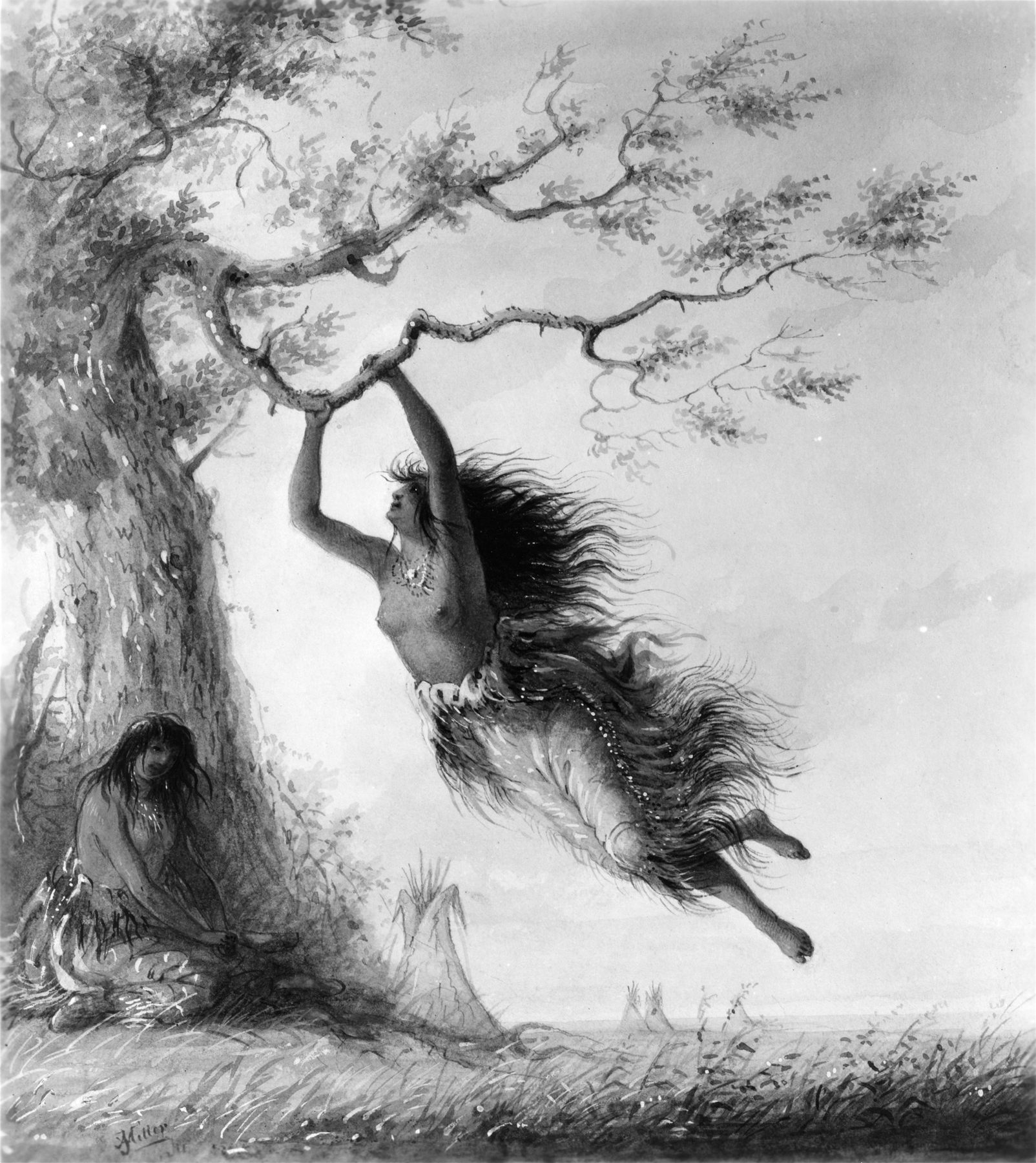Indian Girls, Swinging
(18th and 19th Centuries )
Extracts from Alfred Jacob Miller’s original text, which accompanied his images of Native Americans, are included below for reference. These words, which shaped how Miller’s contemporaries viewed the watercolors, reveal the racism and sexism embedded in 19th-century exploration and colonization of the western part of what is today the United States.
This "single incident that arrested the Artist's eye" proved to be a popular picture that, perhaps as much as any other image, seemed to show the Indians to be a carefree, romantic lot. Miller later permitted it to be copied as a chromolithograph for C. W. Webber's book entitled "The Hunter-Naturalist: Wild Scenes and Song-Birds" (1854). As might be anticipated, later editions of the work had the girl fully clothed, despite Miller's note that "she had in truth, almost 'nothing to wear.'" A.J. Miller, extracted from "The West of Alfred Jacob Miller" (1837).
In July 1858 William T. Walters commissioned 200 watercolors at twelve dollars apiece from Baltimore born artist Alfred Jacob Miller. These paintings were each accompanied by a descriptive text, and were delivered in installments over the next twenty-one months and ultimately were bound in three albums. Transcriptions of field-sketches drawn during the 1837 expedition that Miller had undertaken to the annual fur-trader's rendezvous in the Green River Valley (in what is now western Wyoming), these watercolors are a unique record of the closing years of the western fur trade.
Provenance
Provenance (from the French provenir, 'to come from/forth') is the chronology of the ownership, custody, or location of a historical object. Learn more about provenance at the Walters.
William T. Walters, Baltimore, 1858-1860, by commission; Henry Walters, Baltimore, 1894, by inheritance; Walters Art Museum, 1931, by bequest.
Exhibitions
| 1984 | Alfred Jacob Miller: Watercolors and Drawings. The Walters Art Gallery, Baltimore. |
| 1981-1982 | Alfred Jacob Miller: An Artist on the Oregon Trail. The Walters Art Gallery, Baltimore; Amon Carter Museum, Fort Worth; Buffalo Bill Historical Center, Cody. |
| 1980 | Now I Lay Me Down to Eat: Notes and Footnotes on the Lost Art of Living. Cooper-Hewitt National Design Museum, New York. |
Conservation
| Date | Description | Narrative |
|---|---|---|
| 5/15/1978 | Examination | examined for loan |
| 5/5/1979 | Loan Consideration | examined for loan |
| 11/27/1979 | Treatment | cleaned; mounted; re-housed |
| 11/27/1979 | Examination | examined for loan |
| 11/1/1993 | Loan Consideration | examined for loan |
Geographies
USA (Place of Origin)
Measurements
H: 14 7/8 x W: 8 1/2 in. (37.8 x 21.6 cm)
Credit Line
Commissioned by William T. Walters, 1858-1860
Location in Museum
Not on view
Accession Number
In libraries, galleries, museums, and archives, an accession number is a unique identifier assigned to each object in the collection.
In libraries, galleries, museums, and archives, an accession number is a unique identifier assigned to each object in the collection.
37.1940.47





